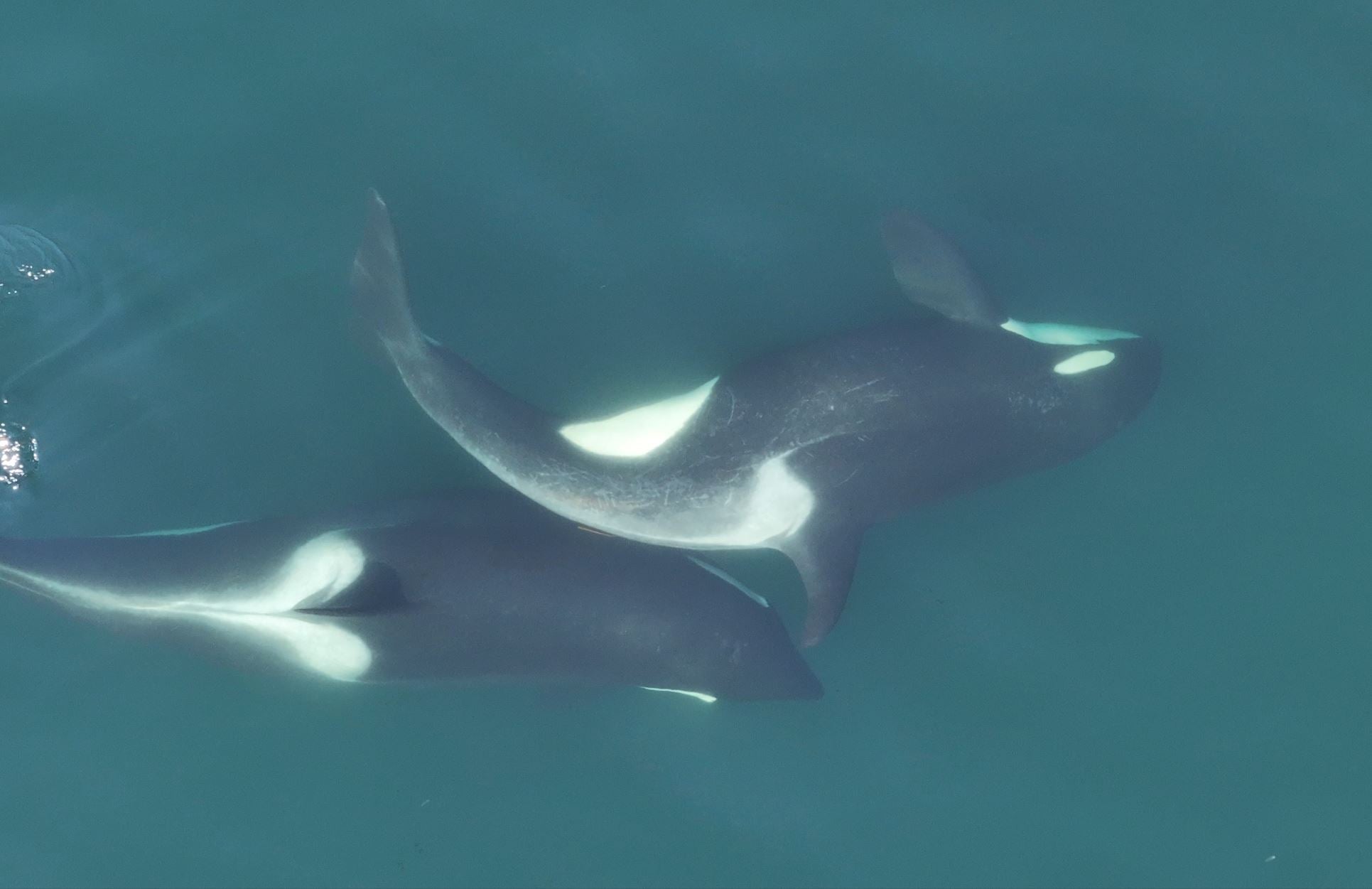Killer whales off the west coast of North America have been spotted making and using tools to groom each other, the first time such behaviour has been recorded in marine mammals.
Scientists from the Centre for Whale Research in the US found southern resident killer whales breaking off pieces of bull kelp and rolling it across each other’s skin.
The study, based on aerial footage collected since 2018 and published in Current Biology, suggests that killer whales use kelp as grooming tools, potentially to remove dead skin.
“We found that southern resident killer whales regularly use lengths of bull kelp during social interactions, apparently as a tool to groom one another,” study lead author Michael Weiss from the Centre for Whale Research said.
“To find that the whales were not just using but also manufacturing tools, and that these objects were being used in a way never before reported in marine mammals, was incredibly exciting.”
While tool use is well-documented in land animals such as birds, elephants and primates, examples in marine mammals are extremely rare.
Researchers observed the behaviour in whales of both sexes and across age groups, with individuals often grooming close relatives or similarly aged partners.

“What I find most remarkable is that despite this apparently being a common behavior – we see it most days we fly our drone over these whales – it hadn’t yet been discovered in this population despite nearly 50 years of dedicated observation,” Mr Weiss said.
“To me, this demonstrates not just the power of new observation methods but also how much we still have to learn about these animals.”
The whales appeared to break off the ends of bull kelp stalks before pressing the kelp against a partner and rolling it between their bodies, sometimes for long periods.
The researchers said the behaviour could serve a hygienic function as whales with more dead or moulting skin were more likely to engage in kelp grooming.
Southern resident killer whales are critically endangered, with fewer than 80 individuals remaining.
“While there are other killer whales around the world, the southern residents represent a genetically, ecologically, and culturally distinct population,” Mr Weiss said.
“This finding highlights yet another way these whales’ society and culture is unique and the importance of recovering the southern resident killer whale population.”
It is still unclear whether this behaviour is unique to this group or widespread among whale populations. But scientists say the latest study broadens our understanding of tool use and social behaviour in the marine world.
Heat wave: Thousands face triple digit temperatures across multiple US cities
Mapped: Canada’s wildfires are impacting air quality in these US communities
Expert advice on how to stay cool and safe amid heat alerts
Deadly heat may bring ‘ring of fire’ to eastern U.S. this week
Charging for plastic shopping bags can actually lead to cleaner beaches, study shows







